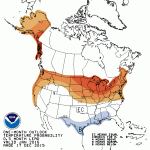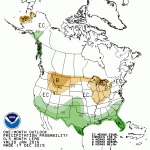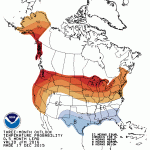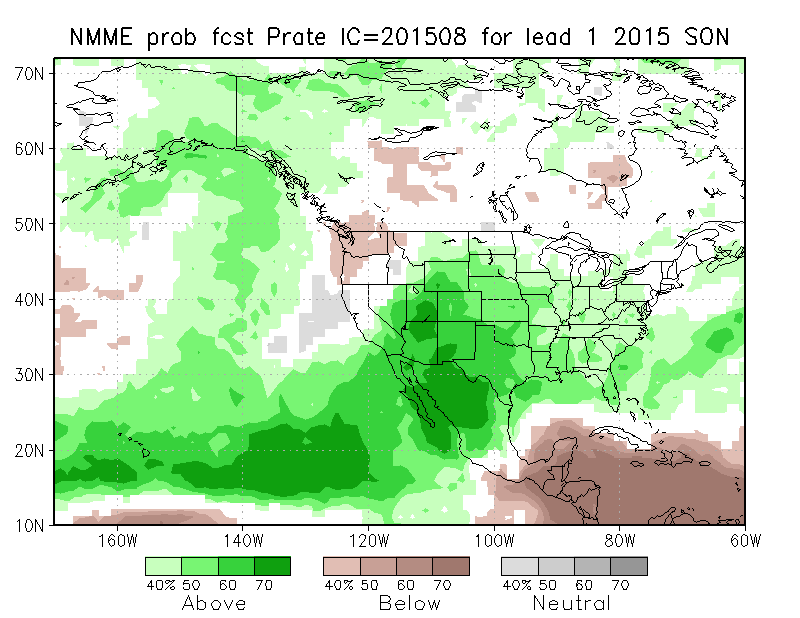Summary: The NWS Climate Prediction Center has issued their forecasts for September, September-November (Fall), and December-February (Winter). Illinois has an increased chance of being warmer than normal this fall, and wetter than normal this winter.
According to the Climate Prediction Center, the main factors in the forecast are the recent warming trends and the expected La Niña. While the conditions in the Pacific are in the neutral stage between El Niño and La Niña, there is a 55-60 percent chance of a weak La Niña during fall and winter.
Fall
The September forecast (top row) has Illinois and the Midwest with equal chances of being above, below, and near-normal on both temperature and precipitation. I call this a neutral forecast since there are no indications that we will be significantly cooler, warmer, wetter, or drier.
The September-November forecast (bottom row) has Illinois and the US with an increased chance of being warmer than normal. They are neutral on the precipitation forecast.







